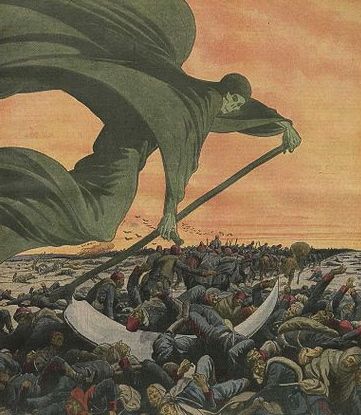
Cholera, depicted here as a black angel of death, left thousands dead in St. Louis, and devastated Indian tribes living along the Missouri River.
Cholera was raging through the city
of St. Louis by the first of May that year. DeSmet wrote in
his journal: "The cholera is now most awful; hundreds of new cases
occur daily." By the end of the month, DeSmet wrote: "...
thousands have died of it already…it appears still on the
increase."
Families fled
by the hundreds, emptying the city. By July, business was at a
standstill. By the end of August, one out of ten residents
had been buried.
This latest
plague was reported to have arrived at the waterfront town by
steamboat. Over the course of that year, 2,546 steamboats had
tied up at the city wharf, including those that had made 350 trips
up the Missouri. After unloading their cargoes of fur,
fifty-eight steamers working the Big Muddy returned up river filled
to capacity with wide-eyed emigrants who were sick with gold
fever. To make matters far worse on the Oregon Trail, most
wagon trains departed that spring with infected people, and the
plague was soon spreading from the Missouri to the Rocky Mountains,
laying waste to Indian tribes along its deadly path.
By April,
emigrants crowded into the westward bound staging area of Westport
and Independence had become alarmed. In five days, more than
twenty people had died of the scourge. One observer, Dr. B.B.
Brown, reported that cholera was "sweeping over the trains on this
road with fearful mortality." One boat of Mormons bound for
Omaha buried 47 of the faithful and were denied permission to tie
up at St. Joseph. Dr. T. McCollum, a westward bound
traveler that year, reported "The road from Independence to Fort
Laramie is a graveyard."
Related People
Related Events